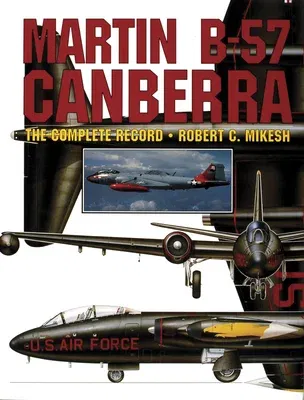No story about one type of aircraft could be more complete than this
coverage about the B-57 Canberra. A brief history of its British
inception sets the stage for the conversion that took place to American
standards for production in the United States. The Canberra was needed
to fill the night intruder role in the USAF that was identified during
the Korean War. The B-57, did that, and far more. The author, who flew
the B-57 over a 15-year period, covers all aspects of the 28 years of
operational service of the B-57. Initially, the B-57 outfitted four
combat wings in the bomber version, along with many units in the
reconnaissance role. Missions changed and units faded, but the Vietnam
War set the history for this remarkable airplane. It remained in combat
for eight years, and many of these daring missions are covered in detail
in this book. This becomes another informative reference book dealing
with the lively aaspect of the Vietnam War. The book is filled with many
rare action pictures of this airplane in color and black and white. The
expanded appendices contain many historical points such as units and
time period of assignment, production records, individual line entries
for the history of each aircraft, and many more details that appeal to
the airplane historian. Robert C. Mikesh had accumulated 2,000 hours in
flying the B-57 Canberra, beginning with the first USAF unit to receive
the bomber version. Enamored from the very beginning with this airplane,
the thought of one day writing a book about the B-57 inspired him to
gather detailed notes over the years while the airplane was operational.
This brings to life this airplane story that could not be compiled any
other way than through this first hand experience. Mikesh served a
21-year career in the USAF as a pilot, having spent much of this time in
the Far East. During the Korean War he flew a tour in Douglas B-26 night
intruder missions over North Korea, and during the Vietnam War he was a
Forward Air Controller in the Cessna 0-2A, directing air strikes, many
being his comrades in B-57s. After retiring from the Air Force in 1970,
Mikesh joined the National Air and Space Museum as curator. He became
responsible for managing the world's foremost collection of historic
aircraft. This not only included locating and gathering historic and
technologically significant aircraft and acquisitions, but overseeing
their restoration as well. Now retired from NASM as of 1991, Mikesh
devotes much of his time to aviation writing and consulting work for
museums and aircraft restorers.

